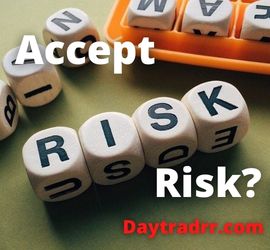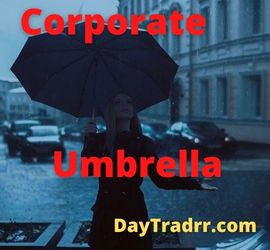What are Covered Calls in Options Trading?
 A covered call is a two-part options trading strategy in which stock is purchased or owned and calls are sold against the underlying security. Covered calls refer to a financial transaction in which the investor selling call options owns an equivalent amount of the underlying security.
A covered call is a two-part options trading strategy in which stock is purchased or owned and calls are sold against the underlying security. Covered calls refer to a financial transaction in which the investor selling call options owns an equivalent amount of the underlying security.
To do so, an investor with a long position in an asset writes (sells) call options on that asset to produce an income stream. The investor’s long position in the asset serves as the cover since it ensures that the seller can deliver the shares if the buyer of the call option exercises it.
Whether the shares are purchased before the calls are sold or purchased at the same time, the resulting position is described as a covered call position. A buy-write transaction occurs when an investor simultaneously purchases a stock and writes call options against that holding. An overwrite occurs when an investor writes a call option against shares he already owns.
- A buy-write – is when an investor buys 100 shares of stock and simultaneously sells 1 call option.
- An overwrite – is when an investor owns 100 shares for some time and decides to sell 1 call option against those shares.
Covered Calls – A Closer Look
Covered calls are a neutral strategy. It means that the investor expects just a modest increase or reduction in the underlying stock price for the term of the covered call option. This technique is frequently used when an investor has a short-term neutral perspective on the asset. As a result, he retains the asset long while also holding a short position via the option. The objective is to make a modest income from the option premium. In other words, this strategy works when an investor plans to retain the underlying stock for an extended period. There may occur a lull when he does not anticipate a significant price gain in the near term. Regardless, he can make income (premiums) for his trading account while waiting out the lull.
A covered call is a short-term hedge on a long stock position. It allows investors to still make income from the option premium received. However, the investor forfeits stock gains if the price moves above the option’s strike price. If the buyer chooses to execute the option, they are additionally required to deliver 100 shares at the strike price for each contract written. A covered call strategy isn’t appropriate for investors who are either bullish or very bearish.
- Bullish investors – are usually better off not writing the option and simply holding the stock. The option limits the stock’s profit, which may diminish the overall profit of the trade if the stock price rises.
- Bearish investors – are negative about the market’s near-term potential. As a result, they may be better off simply selling the stock. The modest premium obtained for writing a call option will not cover the stock’s loss if the share price plummets.
Covered Call Benefits
Covered calls offer investors three potential benefits.
- Income – The premium received from selling a covered call is an additional source of income. For this reason, many investors sell covered calls on a regular basis. Often selling them monthly or quarterly. They do this with the intention of adding several percentage points of cash income to their annual trading returns.
- Target an eventual selling price – Selling covered calls can assist investors in determining a selling price that is higher than the current price. For example, consider a stock purchased for $29.00 per share, and a 30 Call sold for $1.00 per share. If this covered call is assigned, meaning that the stock must be sold, a total of $31.00 is received, excluding commissions. Even if the stock price only climbs to $30.50, the assignment results in a total payment of $31.00. If the investor is willing to sell the shares at $31.00, the covered call help to achieve that goal. If the stock price never reaches that level, the investor keeps the stock and still pockets an extra $100 as the premium.
- Downside protection – Another reason some investors sell covered calls is to obtain minimal downside protection. In the preceding example, the $1.00 per share premium obtained lowers the break-even point of owning this stock and, as a result, lowers risk. However, because the premium obtained from selling a covered call is only a small fraction of the stock price, the protection – if it can be called that – is quite limited.
The maximum upside of a covered call
A covered call’s maximum profit is more than just the premium collected for writing the option. There is also profit from the potential upside between the current price and the strike price. Thus, if a $15 call is written on a stock trading at $10 and the writer obtains a $1.00 premium. However, the maximum potential profit is the $1.00 premium plus the stock’s $5 increase to the $15 strike price. The maximum loss, on the other hand, is equal to the underlying stock’s purchase price less the premium obtained. This is due to the possibility that the stock will fall to zero. In that case, you will only receive the premium for the options sold.
Covered Call Risks
There are two major risks to the covered call strategy.
- Downside risk – The real risk of significant losses if the stock price declines below the breakeven point. The breakeven point is the purchase price of the stock minus the option premium received. As with any strategy that involves stock ownership, there is a substantial risk. Although stock prices can only fall to zero, this is still 100% of the amount invested. So, it is important that covered call investors fully understand stock market risk.
- Upside opportunity loss – The potential risk of missing out on a substantial stock price increase. The covered call writer is committed to selling the stock at the strike price as long as the covered call is open. Although the premium offers some profit potential above the strike price, it is limited. As a result, the covered call writer does not benefit completely from a stock price increase above the strike. In the case of a significant stock price increase, covered call writers may feel as if they lost a terrific chance.
Example of a Covered Call
Assume an investor owns stock in a fictitious corporation called Johnson & Jackson Inc. The investor loves the company’s long-term prospects and shares price. However, he believes the stock will trade relatively flat in the short term. He expects it to remain within a couple of dollars of its present price of $100.
So, our investor sells a call option on J&J Inc. with a strike price of $105. It is valid for six months and the premium on this call option is $3 per contract share. One call option contract consists of 100 shares. Mr. Investor gains the premium of $300 from the option sale (100 shares x $3.00 premium per share) but limits the upside on the stock to $105 for the period of the option (6 months). One of three scenarios will take place:
Covered Call Scenarios
- The stock price remains at $100 per share – In this case, the option buyer will not exercise the call option since it is out-of-the-money. That means the strike price is greater than the market price of the stock. Mr. Investor will not receive a return on the stock because the price remains the same. However, the call premium pays him $3 per share or $300.
- Increased stock price to $112 – If the stock price increases to $112 per share after six months, the buyer will exercise the call option. Mr. Investor will receive $105 per share (strike price of the option) and $3 per share from the call premium. In this covered call scenario, our investor sacrificed a small portion of potential profit in return for risk protection.
- Decreased stock price to $88 – In this circumstance, the call option will expire in the same way that it did in scenario 1. The stock’s value will fall by $12 per share, but the call premium of $3 per share will partially offset the loss. As a result, Mr. Investor’s total paper loss will be $9 per share. However, our investor has successfully outperformed the stock. He still owns the stock but has an extra $300 in his pocket minus any trading fees.
Frequently Asked About Covered Calls
Are Covered Calls Profitable?
Covered calls, like any other trading method, may or may not be profitable. The largest payoff from a covered call comes if the stock price rises to and does not exceed the strike price of the call that was sold. The investor gains from a minor rise in the stock and receives the option’s full premium as it expires worthless. Covered call writing, like any other technique, has advantages and disadvantages. Covered calls, when used with the correct stock, can be a terrific method to lower your average cost or produce revenue.
Are Covered Calls Risky?
Covered calls are thought to have relatively low risk. Covered calls, on the other hand, limit any additional upside profit potential if the stock price rises above the strike price. Further, they do not offer much protection from a decrease in the stock price. Unlike covered calls, call sellers who do not own an equivalent amount of the underlying shares are referred to be naked call writers. If the underlying security rises, naked short calls have theoretically unlimited loss potential.
Final Words
A covered call, often known as a buy-write, is a two-part strategy. It involves the purchase of shares and the sale of calls on a share-for-share basis. Covered calls can provide investors with three potential benefits: income in neutral to positive markets, a selling price above the current stock price in rising markets, and some downside protection. Investors must also be:
- Willing to own – the underlying stock if the price drops or remains static
- Willing to sell – the underlying stock if it rises to the strike price.
- Satisfied – with the modest expected returns and if-called scenario.
Covered call losses occur when the stock price falls below the breakeven threshold. There is also an opportunity risk if the stock price climbs above the covered call’s effective selling price.
Up Next: What Is a SPAC and What is a SPAC Stock?
 A SPAC or special purpose acquisition company is a publicly-traded, cash-rich company. Its sole purpose is to find a suitable private company and take it public through a merger or acquisition. As a result, the private company can be publicly traded but avoids much of the initial public offering (IPO) hassle and expense. A SPAC stock refers to the common shares of a SPAC shell company traded before a merger takes place.
A SPAC or special purpose acquisition company is a publicly-traded, cash-rich company. Its sole purpose is to find a suitable private company and take it public through a merger or acquisition. As a result, the private company can be publicly traded but avoids much of the initial public offering (IPO) hassle and expense. A SPAC stock refers to the common shares of a SPAC shell company traded before a merger takes place.
A special purpose acquisition company (SPAC) has no other commercial operations. It is founded for the purpose of raising cash through an initial public offering (IPO) and is devoted to either acquiring or merging with another firm. SPACs, are often known as blank check firms. They have existed for decades, but their popularity has skyrocketed in recent years.
In 2020, 247 SPACs were launched with $80 billion invested. The first quarter of 2021 saw 295 newly constituted SPACs raise a record $96 billion. By comparison, just two SPACs were introduced to the market in 2010. SPACs account for more than half of all new publicly traded firms in the United States in 2020. (Source: hbr.org)




